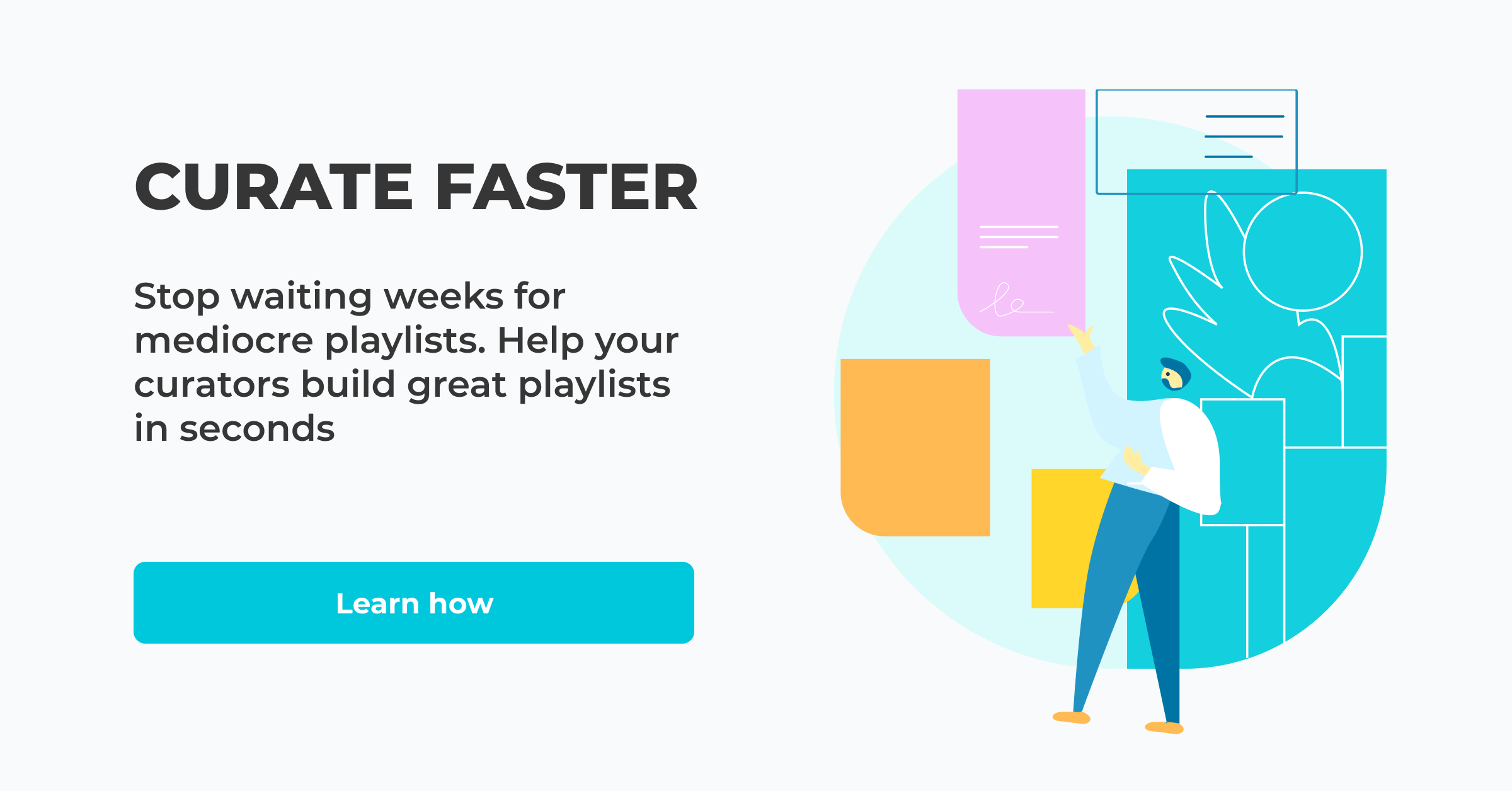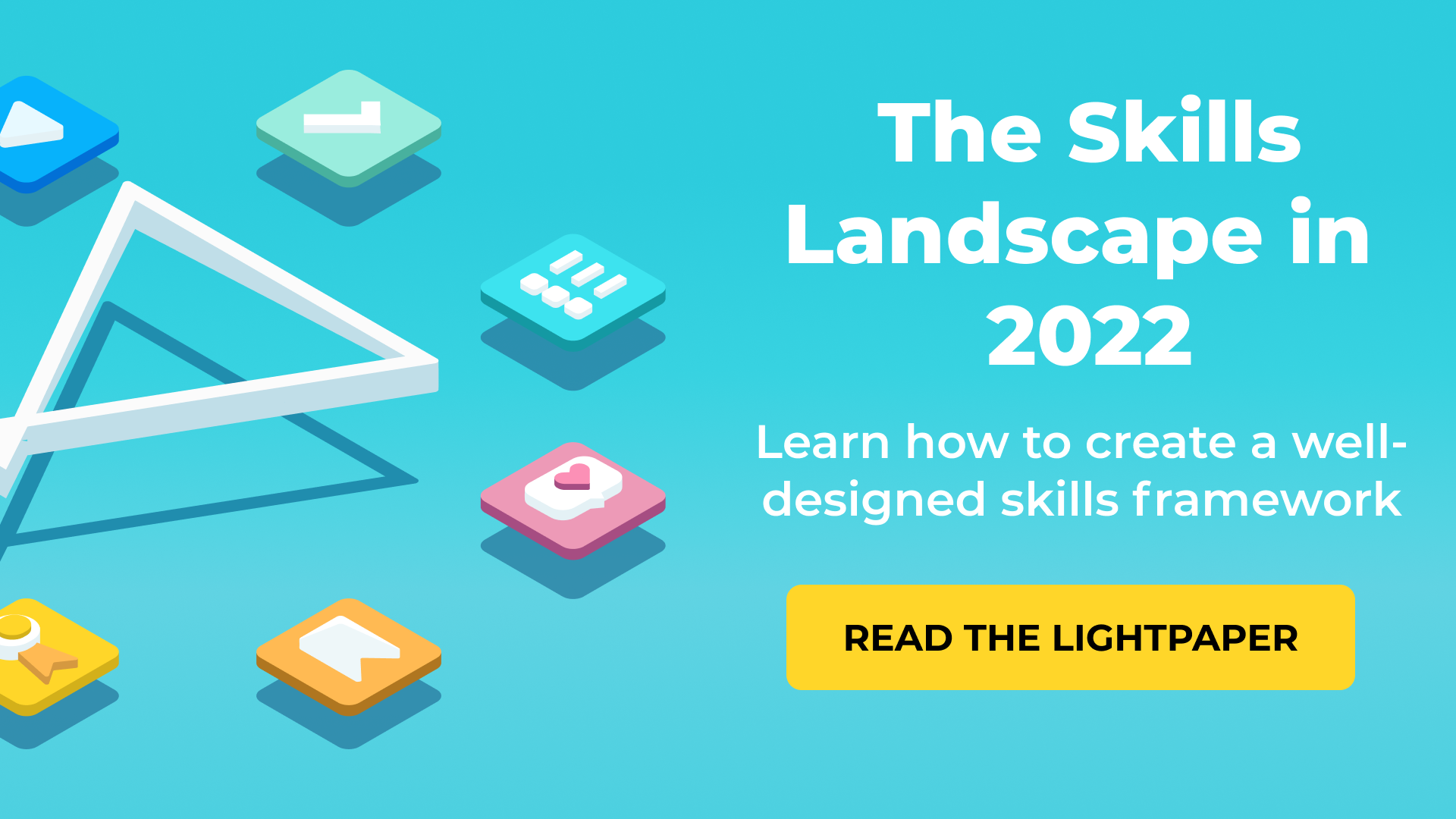Watch our interview with ECITB's Senior Service Designer, Steven Rick who walks us through ECITB's new learning strategy, the central role curation plays in it and how his work with Filtered is expected to create a £1 million cost saving over the next four years.
We've also added a full transcript below so you don't miss a thing!
Interviewer: Please introduce yourself.
Steven Rick: I'm Steven Rick, I'm the Senior Service Designer at ECITB, which is the Engineering Construction Industry Training Board.
Interviewer: How does curation fit into the ECITB digital passport?
Steven Rick: I was brought into the organization around 18 months ago now, right in the midst of the Covid pandemic, when training wasn't really happening for a lot of people and as a training board we hadn't really moved to online delivery of things.
As we started using some of the tools that were out there such as Adobe Classrooms and some Zoom communication, but thinking about building from the ground up where it's a real blended mix was really important. We decided to go on the blended rather than full e-learning side because people still need that communication out of the classroom. It’s very hard to replicate practical skills online, especially in those types of industries.
One of the first things that we wanted to test was being able to source lots of different content from different places and build a pathway of learning. One of the standards that we were working to was the digital security standard in trying to help people understand why it's important to look out for phishing emails and all those different things. I've seen plenty of different parts in e-learning out there but they're not quite stitched together to cover this full standard that we were looking to create.
What we did with Filtered was to start to define what type of content we’d need to find. It came about to around 30 to 35 pieces of content that would map alongside the standard. We built an online course that could be done in around 3.5 to 4 hours where you can take all that full understanding but work towards a national standard alongside it.
Interviewer: How would this have been done before curation?
Steven Rick: We're custodians to the standards so what we normally go through is we look after the standard, build the standard - so we talk to lots of people in industry and get to understand what they'd like to see made up as part of that standard. We create our standard and then we start to work with our training providers, and we allow them to start building courses next to it. Then, they have to come back to us for approval and once they get approved through our board, the training providers can deliver against it. But we have no control over how that is delivered and there’s no standardisation: the resources that are being used are all different.
What we’ve been able to do this way around is create that standardisation of resources and give it to our providers who are then able to deliver on our behalf. That means we’ve got good standardisation of learning; it also means that we can do rapid development and rapid deployment against things as well, whilst also providing resource which we've not been able to do before. We can now look at the data where people start falling off throughout any of these qualifications or pieces of learning and we can see if somebody starts dropping off. If we see multiple people dropping off after the third of fourth piece of micro bite size learning, we can start looking at that one individual piece of resource and swap it out to hopefully help those people continue that learning journey. But also it means we can keep up to date really quickly so if a standard changes or if a new piece of government legislation comes out around GDPR, or something like that inside the digital passport, we can replace it on the same day rather than having to roll it over multiple months.
Interviewer: Is curation the centre piece of your digitisation strategy?
Steven Rick: The platform is always important for people to access but actually content and curation is the most important thing. There’s no point bringing somebody to somewhere if people don’t engage with the content and to have engaging content, you have to go through a lot of curation to get there. So yes, curation does sit at the top of the tree.
Interviewer: Where do you source your content from?
Steven Rick: Multiple places. Obviously, the use of Content Intelligence is really important. Bringing all those different resources, but able to map skills against it: it gives us a real, you know, hit list straight away.
We also take recommendations from the industry and from the people who are taking those courses. And then we can start looking at those pieces of content and start vetting them and verify them to make sure they're up to date and they're in line with industry. In the long run, it's the content game and the curation game is going to go on forever, there's no start and end to it, you've always got to be on top of it. And so then it's about managing your library correctly.
Interviewer: What goes into a good playlist / pathway?
Steven Rick: The only way to build good pathways of good curated content is by knowing the customer that's going to go through it. And I think, you know, education has changed a lot in the last 10 years, 10 - 15 years, and a lot of that has happened because of the internet. And because of social media, and the way that people communicate with each other, and now been able to do most things on a mobile phone, rather than anything else. And I know, those types of things we've been talking about for years. But actually, it's completely true, you know, people will jump to a mobile phone before they'll walk in their classroom.
Thinking about those different pieces and understanding how your learner is going to engage with things, we've got to stop thinking about designing for chalk and talk that that most of us would have been used to going through an education system. People like variety of choice, people have different learning styles. So eventually, in the content catalogue that we're looking to build alongside all these different courses that we're going to create over the next few years, we'd like to have three or four different variations of the same content. It might be content on digital security, maybe a video, it might be a podcast, it could be an article through a blogging platform, all saying the same thing. Or delivering the same outputs but allowing the learner to understand it in the way that they want to consume it. And turning those tables around from teaching to knowing the best to learn or wanting to know more, is the most important part, you can't assume anything.
Engagement is critical. And it's critical, because as I mentioned before, what will be the point, to put it in old-fashioned terms, if we built a new library, and we put 10,000 books in it, but then we have nobody ever walked through the door, then you've just wasted 10,000 books. You might as well build something where people want to come, and they want to engage with that content.
Interviewer: How do you handle quality and where does the creative stuff come in?
Steven Rick: We had this through the digital passport when we were building. There were four or five really great articles on the web. But unfortunately, there are too many jump off points inside those articles. They're from trusted sources but they were, you know, trying to get people to sign up for PhD programmes and different courses halfway through the article.
Now, what we could have done is lifted that copy and dropped it into the LXP or the other LMS as a learning pathway. But we wanted to make it a little bit more engaging. What we decided to do was strip out some of those key pieces of learning that needed to be undertake and build little 1 to 2 minute videos of that article. And refer to the original article in those videos. What that does is take what was a 5 - 6 minute article with lots of jump off points, which could be distracting for anybody who's trying to go through the digital passport, and instead keep them inside the digital passport as well as reducing the content time.
Interviewer: So curation doesn’t replace creation?
Steven Rick: It's about supporting creation. We're so fortunate we're in a time now where we can literally get on a computer in the morning and not understand a thing and walk away 5 minutes later, completely understanding something because of the likes of YouTube because of the likes of Forbes because of the lights and McKinsey, all that information is there. But it doesn't mean that the way that it is put across in their material is right for your core audience, you've just got to think about how your audience is likely to engage. And you can be creative about how you take that information that you've gained and put it in front of other people.
Interviewer: How does feedback data factor into the process?
Steven Rick: When we released that digital passport, we noticed that on I think it was asset 7 of 32 people were getting to that point and then stopping. The reason they were stopping, we believe, is it was just too long a video for them. It was a TED talk of 60 minutes, which we put in for a little bit of variation. There is only that one TED Talk in there. The rest of the videos are between 2 to 5 minutes and the articles are no longer than 3 or 4 minute reads. What it's helped do is prove that we need to keep even closer to that micro bite size learning content. And it was just a video on passwords, and how to build a strong password. And we can get that information across in literally 1 minute if we want to. So that's what we started to do: we started to create content that delivered the same amount of impact, but in 1 minute, rather than an 18-minute video. The third video is very, very good but it was probably just too long and too in depth for our core audience at that time. The other thing that we can do with that data set, though, is we can start to see different cohorts of learners, and how they're progressing through so we can see that people do it all in one fell swoop, we can see that some people do come in for 5 minutes every day, we can see people who have done it in a classroom, we see people who've done it outside of the classroom. And that becomes really important when we start thinking about what we create, or what we curate going forward.
So, when we start thinking, outside of the classroom, people are doing it for 5 minutes, between 08:00 at 08:05 in the morning, they're likely to be travelling somewhere, or they're studying, they're having their breakfast or something like that. So they're likely to be on a mobile phone, therefore, we've got to find content that is easily consumable on a mobile phone, rather than when you’re sat at a laptop or a desk.
Interviewer: If you’re speaking to your CFO, how would you justify the value this approach can bring?
Steven Rick: We're in a slightly strange position, because this is all new for the organisation that I'm working at. So obviously, there's been cost associated with this front end, because there was no platform in place and there was no content in place, etc, etc. So, at the minute, we're probably on about par, what it would cost to go and build resources for qualifications, probably a little bit over slightly, not much.
But going forward is where those cost savings really come in. Because when you start having a content catalogue, or a resource catalogue, you have to build it in in, you have to build in refresh time. In 4 or 5 years’ time, we have to get back to every resource, make sure it's all up to date and that all the standards are working.
One thing that people never really built into those types of things is wages and time spent of people doing those things.
So to go through a PowerPoint, for example, that is, you know, 50 to 100 slides long, it's going to take somebody with industry knowledge, anywhere between 1 day to a week to do. Now, if you take the average wage of most people, realistically, that's probably going to cost £1,500 - £2,000 to do each time. Now imagine you've got that. But you've got 2,000 courses, or 2,000 pieces of resources, you can see that scaling up quite quickly in cost in that is just looking after your catalogue. When we go into using other people's content, other people's catalogues, that obviously reduces cost burden in time. But also, it means that the refresh is built on their side. On top of that, when you've got things like Content Intelligence that is always rating content through its algorithms, we can then say, well, actually, this one's been superseded, because this one's more relevant and more fresh than this one that we were using 2 years ago.
Going forward, I can see it saving thousands of pounds, hundreds of thousands of pounds. As an organisation, we're predicting that over the next 4 years or so, we will save in the region, or we will divert funds in the region of around a million pounds.
The main thing is, you're freeing up people to go and be more creative. We, as people, we can quite easily get, you know, boxed off into doing certain things on a daily basis. But actually, that's the whole point of industry 4.0 is where those things can be automated and they can allow humans to go away and be that creative person again. That's what we should be doing.
In education, we quite often wrap ourselves up to be educationalists and to be set in stone in doing one thing a certain way. Most people in education are really creative people. And we've just been told to think in certain ways. This allows us to go back to that more creative thinking, to be more efficient, to be more effective, because we're all here to do one thing, which is to help people understand more knowledge and to take more knowledge transfer away and if we can do that quicker, smarter, more cheaply, then that's great because it means we can hit more people.




